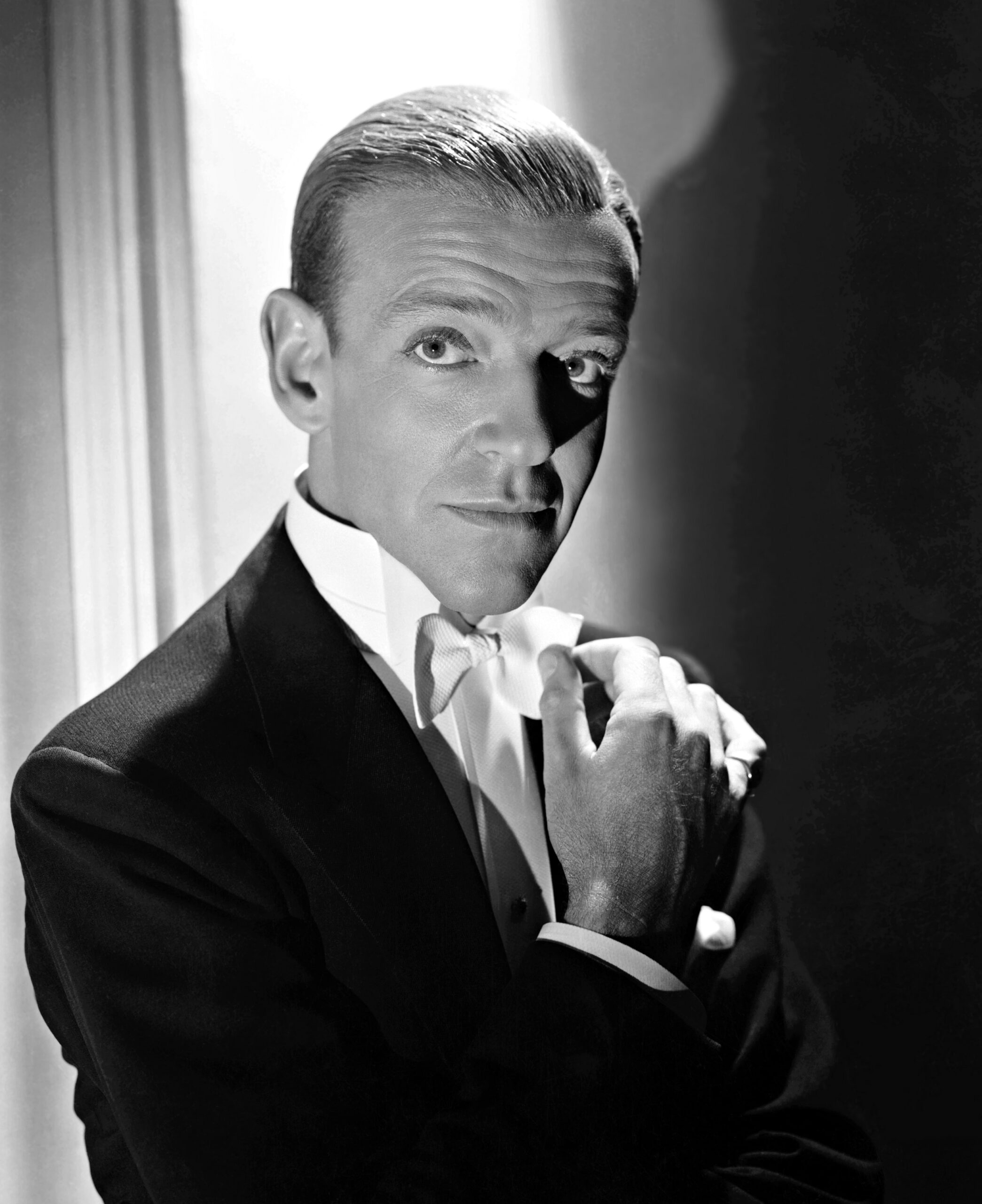Fred Astaire (1899–1987) was an American dancer, actor, and singer renowned for his elegance and innovation in dance. With a career spanning over seven decades, he dazzled audiences with his smooth and graceful dance routines in numerous musical films, often paired with Ginger Rogers. Astaire’s contributions to the entertainment industry earned him numerous awards, and he is regarded as one of the greatest dancers in the history of film and television.
Born Frederick Austerlitz to Frederic Austerlitz and Johanna Geilus, Fred Astaire began his journey into the world of dance at a young age. He and his sister Adele formed a sibling dance act that captivated audiences in vaudeville and Broadway theaters during the 1910s. The siblings quickly gained recognition for their precision and style, marking the beginning of Astaire’s lifelong devotion to dance.
In the early 1930s, Fred Astaire transitioned from his successful partnership with Adele, who had decided to retire from show business after her marriage. Astaire moved to Hollywood, where his solo career took flight, and he soon became one of the most sought-after entertainers in the industry. His first major film role came in 1933 with “Dancing Lady,” where he was paired with Joan Crawford.
However, it was Astaire’s collaboration with Ginger Rogers that truly elevated his career to new heights. The dynamic duo made their on-screen debut together in “The Royal Family of Broadway” (1930), but it was their subsequent partnership at RKO Pictures that left an indelible mark on Hollywood history. From 1933 to 1939, Astaire and Rogers starred in a series of musicals that showcased their exceptional chemistry, dazzling dance routines, and comedic timing.
Classic films like “The Gay Divorcee” (1934), “Top Hat” (1935), and “Swing Time” (1936) solidified Astaire and Rogers as one of the most beloved on-screen pairs of the era. Their elegant ballroom dances and playful tap routines captivated audiences, making them synonymous with the magic of dance in film. Astaire’s effortless grace and precision, combined with Rogers’ charm, created a cinematic legacy that endures to this day.
Fred Astaire’s impact on dance extends beyond his on-screen partnerships. He was a true innovator in the art of dance, introducing a more relaxed, natural style that broke away from the rigid, formal conventions of the time. His signature top hat, tails, and cane became iconic symbols of sophistication and style, elements that contributed to his enduring popularity.
Astaire’s commitment to perfection in his craft was legendary. He was known for his tireless work ethic, rehearsing tirelessly to achieve the flawless performances for which he became famous. His attention to detail and pursuit of excellence set the standard for dance in Hollywood, influencing generations of performers who followed in his footsteps.
While Astaire was primarily known for his dancing, his talents extended to acting and singing as well. In addition to his dance numbers, he showcased his vocal abilities in many of his films, often interpreting memorable songs that became classics. His smooth voice and charismatic screen presence added depth to his characters, making him a triple threat in the entertainment industry.
Astaire’s illustrious career continued into the 1940s, where he continued to work with various partners, including Rita Hayworth and Judy Garland. His partnership with Hayworth in films like “You’ll Never Get Rich” (1941) and “You Were Never Lovelier” (1942) showcased his adaptability and continued ability to mesmerize audiences.
The 1950s marked a transition in Astaire’s career as the popularity of musicals waned. However, he remained a prominent figure in the industry, taking on diverse roles in films like “The Band Wagon” (1953) and “Daddy Long Legs” (1955). Additionally, he made a successful move to television with “The Fred Astaire Show,” earning Emmy Awards for his work on the small screen.
As the landscape of entertainment continued to evolve, Astaire embraced new challenges. He appeared in dramatic roles, including his acclaimed performance in “On the Beach” (1959), a departure from his usual lighthearted musical fare. Astaire’s ability to transition between genres demonstrated his versatility as a performer.
Fred Astaire’s contributions to dance and entertainment were recognized with numerous awards and honors. He received the Kennedy Center Honors in 1978, a testament to his enduring impact on American culture. In 1981, he was presented with a Special Academy Award for his “unique artistry and his contributions to the technique of musical pictures.”
Astaire’s personal life was marked by enduring love. In 1933, he married Phyllis Potter, and the couple had two children, Fred Jr. and Ava. Tragically, Phyllis passed away in 1954 after 21 years of marriage. In 1980, Astaire remarried Robyn Smith, and the two remained together until his death.
Fred Astaire continued to perform and make occasional film appearances into his later years. His final film role was in “Ghost Story” (1981), where he shared the screen with other Hollywood legends. Astaire’s last public performance occurred at the Academy Awards in 1981, where he paid tribute to his longtime friend and collaborator Ginger Rogers.
Fred Astaire passed away on June 22, 1987, in Los Angeles, California, at the age of 88. His legacy lives on through his timeless contributions to the world of dance and entertainment. Astaire’s influence can be seen in the work of countless dancers, choreographers, and performers who have been inspired by his elegance, innovation, and sheer joy of movement.
In celebrating the life and career of Fred Astaire, one cannot overlook the enduring magic he brought to the silver screen. His legacy as a dancer, singer, and actor continues to enchant audiences, reminding us of the timeless appeal of his artistry. Fred Astaire, with his grace, style, and infectious love of dance, remains an immortal figure in the history of entertainment.
